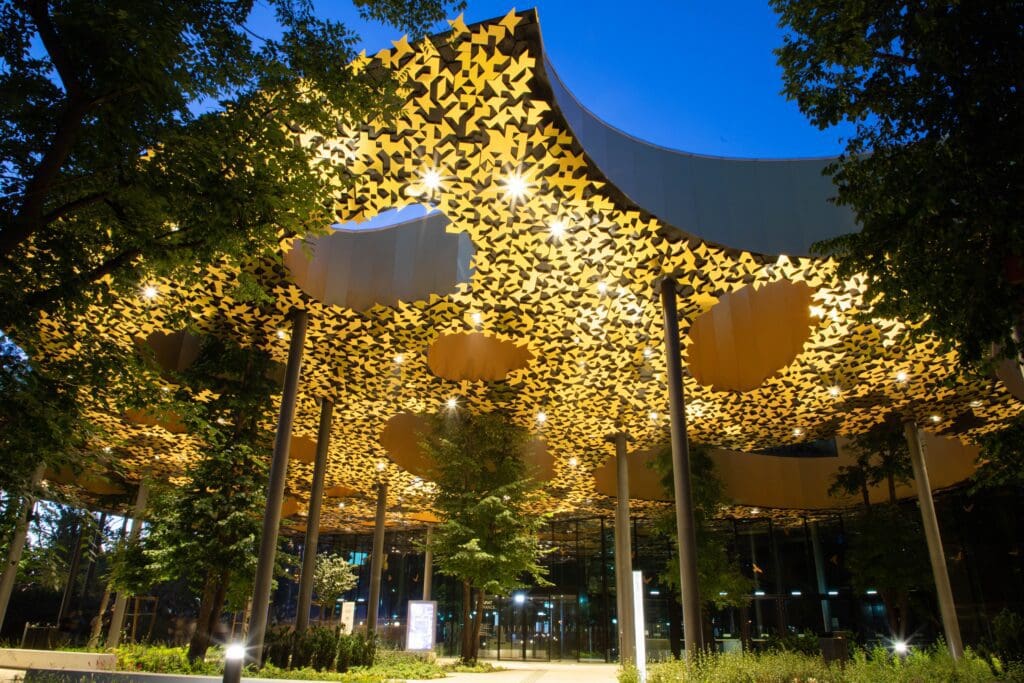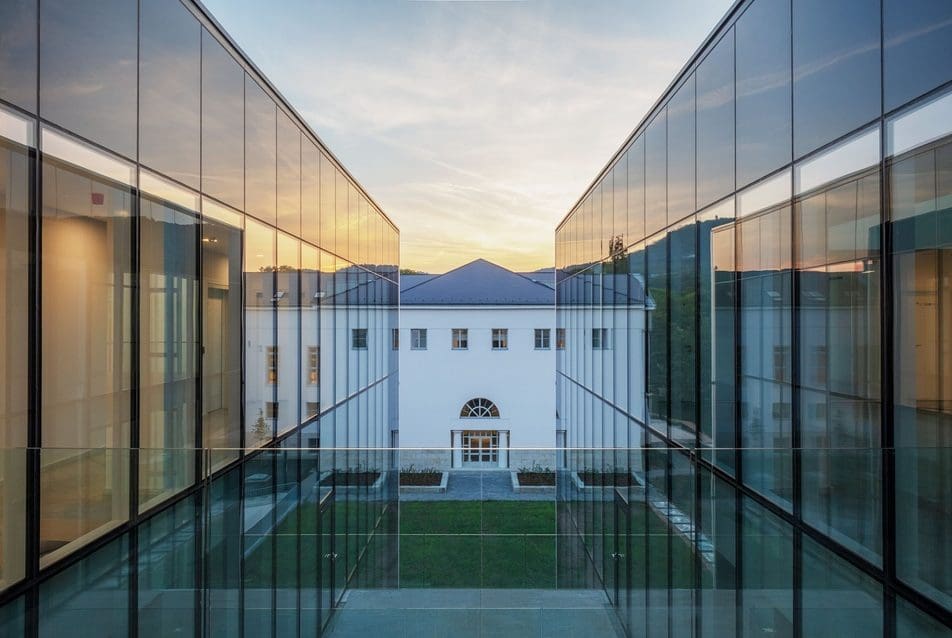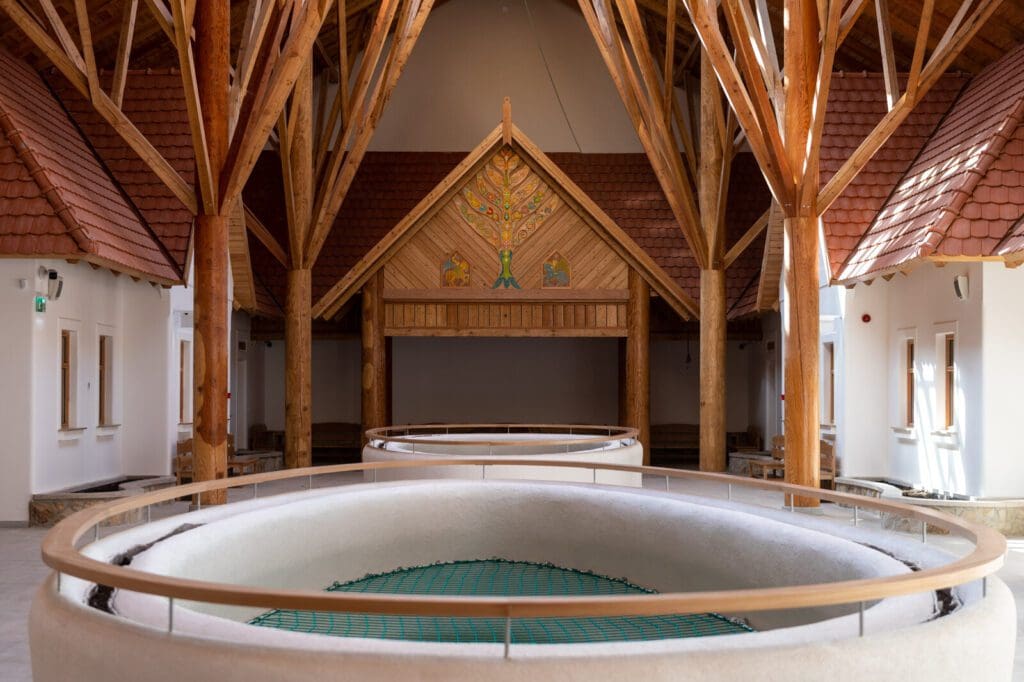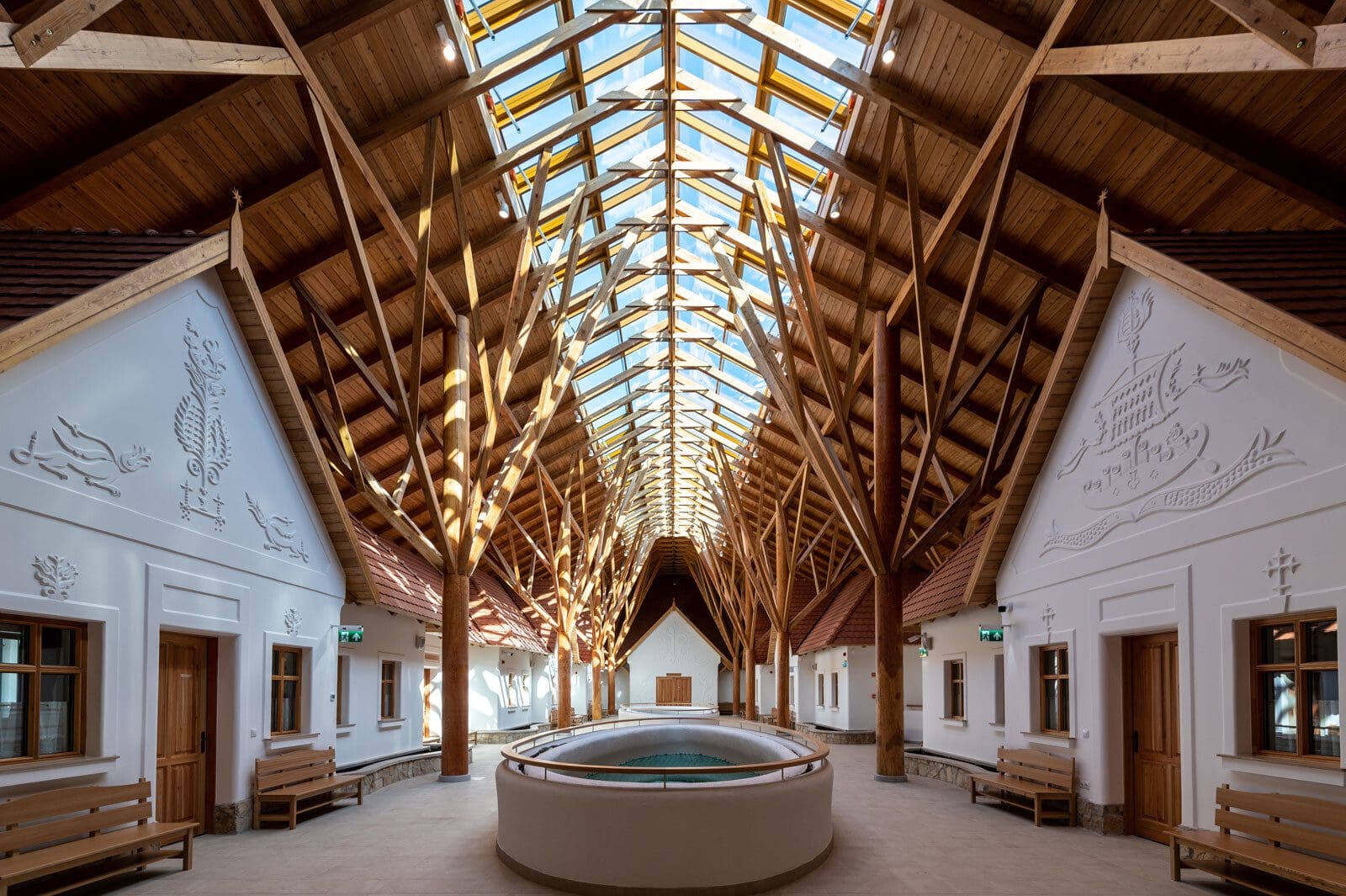Hungarian architecture is not exactly world famous, and neither are Hungarian architects. With the exception of Marcel Breuer, the renowned Hungarian-born modernist architect and designer, most could probably not name any great Hungarian architects. And yet, this lack of fame is probably undeserved. To give just one example, the late nineteenth century outstanding masterpieces of Art Nouveau architecture, such as the Museum of Applied Arts (currently under renovation), the former Royal Postal Savings Bank in downtown Budapest, or the Institute of Geology on the outskirts of the City Park are on par with Gaudí’s works. They were all designed by Ödön Lechner, the father of the Hungarian Secession movement—Hungary’s brand of Art Nouveau. Lechner created a distinct national style, by blending Art Nouveau with Hungarian folk motifs (such as flowers and typical patterns) and Oriental elements (like tiled domes) to reflect Hungary’s roots.
Luckily, we are now witnessing a renaissance of exceptional Hungarian architecture. After a long period of inertia, which resulted from a combination of the absence of political will, a lack of funding and of direction in post-Socialist Hungary, new, world class buildings started to spring up in Budapest after the second Orbán government took office. Think of the beautiful, state-of-the-art campus of the Moholy-Nagy University of Art and Design in Budapest’s 12th district, inaugurated in 2019, or of the truly exceptional edifice of the new Museum of Ethnography in the City Park, handed over this summer. (Sou Fujimoto’s House of Music, Hungary, which is clearly the number one architectural attraction these days, and already a genuine cultural landmark, would also not have been built without the galvanising vision of head of the Liget Budapest Project László Baán or the Hungarian government’s support.)

Of course, new public and private edifices need not just be pretty, and suitable for their functions. One of the main tasks of the built environment is to create connections and build community between people. The MOME campus, the Museum of Ethnography and the House of Music are exquisite examples of edifices and built spaces that fulfil this very task, as is the much less known, quite unhyped structure of the new MTK stadium, inaugurated in 2016, in Budapest’s 8th district. Building a community was at the heart of the design concept of the New Hidegkuti Nándor Stadium. As the architects, the team of BORD Architectural Studio describe it, ’Due to its unique architectural design, the stadium provides the atmosphere of a real arena in spite of its lower, 5000-seat capacity. On account of the outstanding design solutions of this “football-capsule” a brand new building type has been invented.’ Being familiar with the neighbourhood, as I lived in the immediate vicinity of the old stadium, I can attest that the new structure is not only impressive and pleasant to look at (and worth a visit) but has contributed immensely to the broader gentrification of the formerly decrepit area.

But of course, Hungary is not just Budapest. The countryside has also been enriched with exceptional buildings over the past decade, such as the amazing Hagymatikum Spa built in 2012. Situated in the town of Makó, Hagymatikum, named in homage of the main agricultural produce, onions, called hagyma in Hungarian, is a spa and leisure centre built according to Imre Makovecz’s rewarded and internationally acknowledged architectural plans. (Makovecz is perhaps the only other world-famous Hungarian architect besides Marcel Breuer, a standard-bearer of a special, Hungarian form of organic architecture.)
Most recently, a new school building was inaugurated in Biatorbágy, a small settlement outside Budapest, the architects and designers of which followed in Makovecz’s footsteps. Construction started in October 2019, and the school building, as planned, was completed in time for the opening of the new school year on 1 September. The new 16-classroom primary school was badly needed, as the number of students has been constantly increasing for quite some time, with many families moving in from Budapest. What makes the school building unique is that all the visible wooden structures in the organic-style edifice are made of larch: the columns, the beams, the rafters and the gable boards. Large skylights provide lighting for the classroom wings. Thanks to a complex exterior and interior design, motifs of folk architecture and folk visual art are echoed in modern solutions, creating a building that does not only provide space to the school children who attend the school, but also an experience of beauty, and a feeling of community and belonging.

As Balázs Orbán, the prime minister’s political director, said on Facebook, commenting on the inauguration of the new school: ’The built environment also defines our identity, so it is of particular importance that buildings based on Hungarian architectural traditions are born.’ The Hungarian government supported the construction of the school with 7.6 billion forints.







